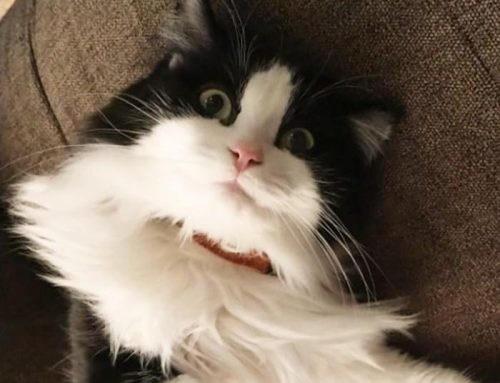Here’s a common complaint we hear: My pet is sick and my vet can’t figure out why. Many times, it is not their fault! They are trained to treat the symptoms that stem from something that is likely to be temporary condition; no way can they effectively treat constant health threats like household cleaners or air fresheners.
Health threats? Yes, the very products you use to clean your home and freshen the air can make your pets sick- really sick! Think about it: Household cleaning products and air-fresheners are made with chemicals, or combinations of chemicals. Most of the labels tell us they are harmful if swallowed, or if they get in your eye, open cuts… Granted that is not likely to happen, but what about constant exposure to their fumes? Illnesses like frequent headaches, loss of energy, dizziness can all be attributed to inhaling toxic chemicals. Individually they “may” be safe, but in most homes pet are being bombarded. “How much exposure is too much?”
Even if you have never experienced any of the a fore mentioned symptoms, what about your pets? Their exposure is 5-7 times greater than your own. Keep in mind your pet’s nose is thousands of times more sensitive than yours, and that one of our years is the equivalent of 5-7 of theirs! Unfortunately, they can’t say “Hey, something is burning my eyes, my nose, my mouth, or my paws!” or, “All of a sudden I’m not feeling good!” Their likely reaction is to move to a different resting place, or to sleep more than usual.
Household Cleaners Household Cleaners can be very toxic, but the tendency is to use a more concentrated cleaner for the areas your pet frequents in an effort to protect your pet and your family. People who are unable to keep pace with pet odor, often place multiple air-fresheners near their pet’s bedding and resting places. When they finally get around to cleaning, they are far more likely to use highly concentrated products.
Imagine you are your pet You spend most of your home life at floor level, where fumes and germs are the most concentrated. Toxic chemicals used in cleaners, disinfectants, and air-fresheners can burn your lungs, and eyes. They can cause the pads of your feet to burn. In response, your pet licks their pads (often incessantly), not only are they burning his mouth, he (or she) is ingesting them. This is often an unknown cause of diarrhea, vomiting, and numerous misdiagnoses!
The Good News Is that you can make your pet areas clean and germ-free without exposing your family or your pet to toxic chemicals. I personally use colloidal silver mixed with 3% hydrogen peroxide to disinfectant everything that comes into my house. Colloidal silver has many scientifically proven medicinal uses, but it is expensive. You can buy a relatively inexpensive colloidal silver generating machines are available that will produce all the colloidal silver any size family needs. But here is an inexpensive technique that will give you the peace of mind that the areas of concern are germ free and smell fresh.
Susan Sumner, a food scientist at Virginia Polytechnic Institute and State University, developed a cleaning and sanitizing combination consisting of 3% hydrogen peroxide (available at the drug store), and white vinegar; each was placed in separate spray bottles.
In tests performed on heavily contaminated food and food surfaces, the combined strength of the two mists killed virtually all Salmonella, Shigella, or E. coli bacteria, making this spray combination more effective at killing these potentially lethal bacteria than chlorine bleach, or any commercially available kitchen cleaner!
The best results came from using one mist right after the other- collectively being ten times more effective than using either spray by itself, or than mixing the vinegar and hydrogen peroxide in one sprayer.
Cleaning Fruits or Vegetables: When cleaning fruit or vegetables, liberally spray with both the vinegar and the hydrogen peroxide, leave for 2 minutes, and then rinse under running water, preferably filtered, alkalinized, or purified. Either the vinegar or the hydrogen peroxide may be applied first. There is no after taste, or toxic residue.
Buying in bulk saves money. Gallon jugs of concentrated hydrogen peroxide are available from beauty supply stores, but must be handled with gloves, and carefully diluted with distilled water. Exact measurements are very important to achieve the proper 3% dilution. If you make a gallon at a time, you can use some to mop floors, put some in a spray bottle to disinfect food and water bowls, litter boxes, the air, bathroom and fixtures, door handles, countertops, sponges, fruits and vegetables, cutting boards, sponges, bedding, walls, remote controls, cell phones… Fill another spray bottle with plain white vinegar to use as a cleaner.
The burning question (no pun intended) is “Why have we gotten away from inexpensive, basic, safe, yet effective cleaners and replaced them with potentially harmful off-the-shelf household cleaners and air-fresheners?” Clearly, Madison Avenue is very good at what they do, but at whose expense?
Author: Robert Hart, Vice President of Vitality Science. His articles have been published in Fido Friendly, Natural Awakenings, plus numerous pet websites and newsletters including; Barkley and Paws, Pet Guardian Angels, Truth About Pet Food, Ani-Med, Professors House, Pet Style, and Mystic Pop.






Leave A Comment